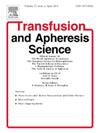Revisiting reference intervals in transfusion medicine: Innovations and challenges in current practice
IF 1.2
4区 医学
Q4 HEMATOLOGY
引用次数: 0
Abstract
Reference intervals (RIs) are essential for donor selection, blood component quality, and post-transfusion safety in transfusion medicine. The CLSI EP28 non-parametric method, based on the Harris-Boyd framework, is widely used but has limitations in handling outliers and skewed distributions. Emerging computational approaches, including Expectation-Maximization (EM), reflimR, and refineR, offer improved RI estimation. This study evaluates the limitations of CLSI EP28 in transfusion medicine and compares EM, reflimR, and refineR to assess their effectiveness in refining RI estimation.A simulated blood donor dataset (n = 500) was generated, modelling hemoglobin (Hb), hematocrit (Hct), and platelet count (PLT). Four RI estimation methods were compared: (1) CLSI EP28 (Non-Parametric Percentile Method), (2) Expectation-Maximization (EM) Algorithm, (3) reflimR (Robust Regression Method) and, (4) refineR (Advanced Statistical Modeling Method).The dataset had mean values of 15 g/dL (Hb), 44 % (Hct), and 250 × 10⁹/L (PLT). CLSI EP28 and EM yielded similar RIs, relying on empirical percentiles. ReflimR and refineR produced wider RIs, improving outlier resistance and distributional accuracy.While CLSI EP28 remains the regulatory standard, computational RI estimation methods improve accuracy, robustness, and regulatory compliance (IVDR, FDA 510(k), ISO 15189). Implementing EM, reflimR, and refineR can enhance donor screening and transfusion safety.
重新审视输血医学的参考间隔:当前实践中的创新和挑战
参考区间(RIs)在输血医学中对献血者选择、血液成分质量和输血后安全至关重要。基于Harris-Boyd框架的CLSI EP28非参数方法被广泛使用,但在处理异常值和偏态分布方面存在局限性。新兴的计算方法,包括期望最大化(EM)、reflimR和refineR,提供了改进的RI估计。本研究评估了CLSI EP28在输血医学中的局限性,并比较了EM、reflimR和refineR,以评估它们在改进RI估计方面的有效性。生成一个模拟献血者数据集(n = 500),模拟血红蛋白(Hb)、红细胞压积(Hct)和血小板计数(PLT)。比较了4种RI估计方法:(1)CLSI EP28(非参数百分位法),(2)期望最大化(EM)算法,(3)reflimR(鲁棒回归法)和(4)refineR(高级统计建模法)。该数据集的平均值为15 g/dL (Hb)、44 % (Hct)和250 × 10⁹/L (PLT)。根据经验百分位数,CLSI EP28和EM产生了类似的RIs。ReflimR和refineR产生了更宽的RIs,提高了抗离群值和分布精度。虽然CLSI EP28仍然是监管标准,但计算RI估计方法提高了准确性,鲁棒性和合规性(IVDR, FDA 510(k), ISO 15189)。实施EM、reflimR和refineR可以加强供体筛选和输血安全。
本文章由计算机程序翻译,如有差异,请以英文原文为准。
求助全文
约1分钟内获得全文
求助全文
来源期刊
CiteScore
3.60
自引率
5.30%
发文量
181
审稿时长
42 days
期刊介绍:
Transfusion and Apheresis Science brings comprehensive and up-to-date information to physicians and health care professionals involved in the rapidly changing fields of transfusion medicine, hemostasis and apheresis. The journal presents original articles relating to scientific and clinical studies in the areas of immunohematology, transfusion practice, bleeding and thrombotic disorders and both therapeutic and donor apheresis including hematopoietic stem cells. Topics covered include the collection and processing of blood, compatibility testing and guidelines for the use of blood products, as well as screening for and transmission of blood-borne diseases. All areas of apheresis - therapeutic and collection - are also addressed. We would like to specifically encourage allied health professionals in this area to submit manuscripts that relate to improved patient and donor care, technical aspects and educational issues.
Transfusion and Apheresis Science features a "Theme" section which includes, in each issue, a group of papers designed to review a specific topic of current importance in transfusion and hemostasis for the discussion of topical issues specific to apheresis and focuses on the operators'' viewpoint. Another section is "What''s Happening" which provides informal reporting of activities in the field. In addition, brief case reports and Letters to the Editor, as well as reviews of meetings and events of general interest, and a listing of recent patents make the journal a complete source of information for practitioners of transfusion, hemostasis and apheresis science. Immediate dissemination of important information is ensured by the commitment of Transfusion and Apheresis Science to rapid publication of both symposia and submitted papers.

 求助内容:
求助内容: 应助结果提醒方式:
应助结果提醒方式:


